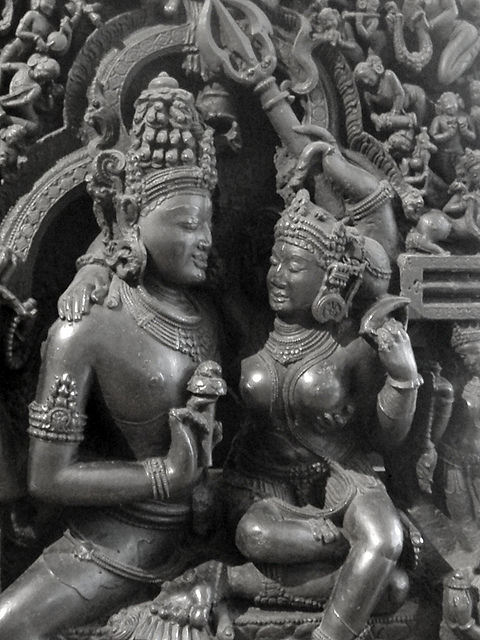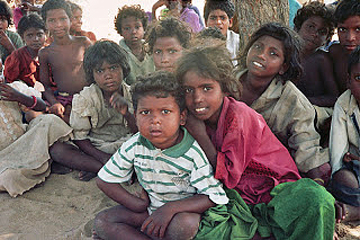A news story last week about the rat-catching proclivities of the Yanadi prompts the reader to wonder just why they persist in their periodic pursuit of these destructive animals. According to older news reports, they are well paid by neighboring farmers for destroying rats, and they no longer rely on hunting them as a major food source. But how did the rat-hunting get started?

For one thing, the Yanadi did not share the disgust of their neighboring Hindu farm families at killing and eating rats. They saw them as food. But Rao (2002) provided a more intriguing explanation by retelling a major Yanadi myth in an appendix to his book Ethnography of a Nomadic Tribe. In myth number 2 (p.265), Rao related that one day Lord Shiva and his mate, the goddess Parvati, invited everyone to come to a dinner.
The Yanadi came along with all the people assigned to castes, but the tribals were dirty and nearly naked except for their loin cloths. Everyone else protested them being there—they should not be considered as equals with other human beings, they said. Shiva was willing to go along with the protesters but Parvati, the Hindu goddess of love, devotion, and fertility, did not agree. Everyone had to be served the food together, she insisted.
So Lord Shiva sent some rats to run in front of the Yanadi, who immediately abandoned the food from the gods and chased after the rats, of which they were quite fond. But the rats disappeared and when the Yanadi returned to the food provided at the feast, it had all been eaten. They were left without anything. But Parvati took pity on them and sent a favorite insect delicacy that they also love to eat, a kind of termite, so the Yanadi finally had their meal.

The news story in The Hindu last week did not mention these sorts of background factors and got straight to the current story. November and December are bad times for the farmers of the Krishna District of Andhra Pradesh because rats move into their fields and consume a lot of the paddy grains they have planted. According to the reporter, T. Appala Naidu, the Yanadi do not hunt rats year-round but they are glad to earn a few thousand rupees from each farm family for the service of eliminating them when they threaten to become a plague.
Farmers in Machilipatnam, a large community in the Krishna District, told Mr. Naidu that damage to the crops caused by the rat infestation each year would be severe if they did not employ the Yanadi to clear away the mammals. They pay them Rs. 20 (US $0.30) per rat, so it can cost the farmers a few thousand rupees per acre to protect a field.

According to the reporter, the Yanadi no longer use smokers to force the animals—which are really lesser bandicoot rats—out of their burrows as earlier reports had indicated. Instead today, some Yanadi told him, “We do prepare an exclusive rat-catching device which is made of sticks or bamboo. We simply place it at strategic places across the field to catch rats alive.” The article in The Hindu included a photo of a Yanadi man carrying some of the ingenious rat traps.
Rao (2002) added an interesting personal perspective to the story. He was not just a scholar writing about a peaceful society; he also clearly enjoyed doing fieldwork among them. He related how the people with whom he was working were a bit suspicious, however, because he lived with them. Normally, non-Yanadi do not live among them so perhaps he was a Yanadi also. They were curious to test out their suspicions.

One day Rao went rat hunting with some kids, he related, and when he and his companions returned to their settlement, they told their families about the professor who had just gone out into the field—quite literally—with them. One of the mothers asked her son if the scholar had eaten any of the rat meat. “If he had eaten, he must be a Yanadi and there is no doubt about it (p.79),” she said. While killing and eating rats was an important marker of being accepted as a Yanadi, Dr. Rao does not say whether he did, in fact, eat any rat meat that day with the kids out in the field.